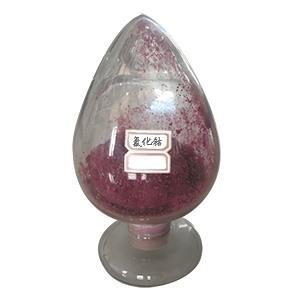Cobalt impact prevention and control and transportation requirements
cobaltIt is a kind of chemical element with relatively high stability. It has been widely used in industrial production and medical device industry. However, it has an impact on the body and is also listed as a carcinogen by the World Health Organization. In this way, What should be paid attention to in storage and transportation of cobalt, which can be a carcinogen but is easier to use?
Storage and transportation:
To be transported in accordance with the relevant requirements of flammable and explosive dangerous goods, it must be transported in the morning or at night in summer, so as to prevent the sun exposure, and the transport process should not be too much collision, and fluctuations should not be the same as the application of curing agent. Transport by car. In the storage process, it must be maintained in a dry, heat-insulated, ventilated, no direct sunlight, and a natural environment with a temperature of less than 25 degrees Celsius.
Jiankang Impact:
Cobalt dust can cause "hard metal disease" (hard metal disease), mainly manifested as allergic asthma, dry cough, dyspnea, occasional chemical pneumonia (interstitial pneumonia), pulmonary edema, etc. Symptoms will gradually decrease after exposure to the substance. CoO can also trigger asthma.
The effect of this element on the skin is mainly allergic or irritant dermatitis. Erythema occurs on the exposed skin, with slight itching, which is more common in the hands, wrists, forearms and other parts and skin wrinkles. Workers, in patients with the above skin diseases, a positive skin test can confirm allergy to the chemical.
Inhalation of cobalt acetate dust can cause symptoms of acute chemical gastritis, such as nausea, vomiting, severe upper abdominal pain, and even hematemesis and stool bleeding.
Impact prevention and control:
In case of accidental ingestion, it is necessary to wash the intestines immediately; if the aqueous solution accidentally splashes into the eyes, wash it with cold water or salt water for at least ten or five minutes.
CaNa2-EDTA, CaDTPA and cysteine can reduce the toxicity of cobalt and can be used. Dermatitis can be applied locally with acetic acid and urea cream ointment. Patients with chemical pneumonia and pulmonary edema should be treated with glucocorticoids.


